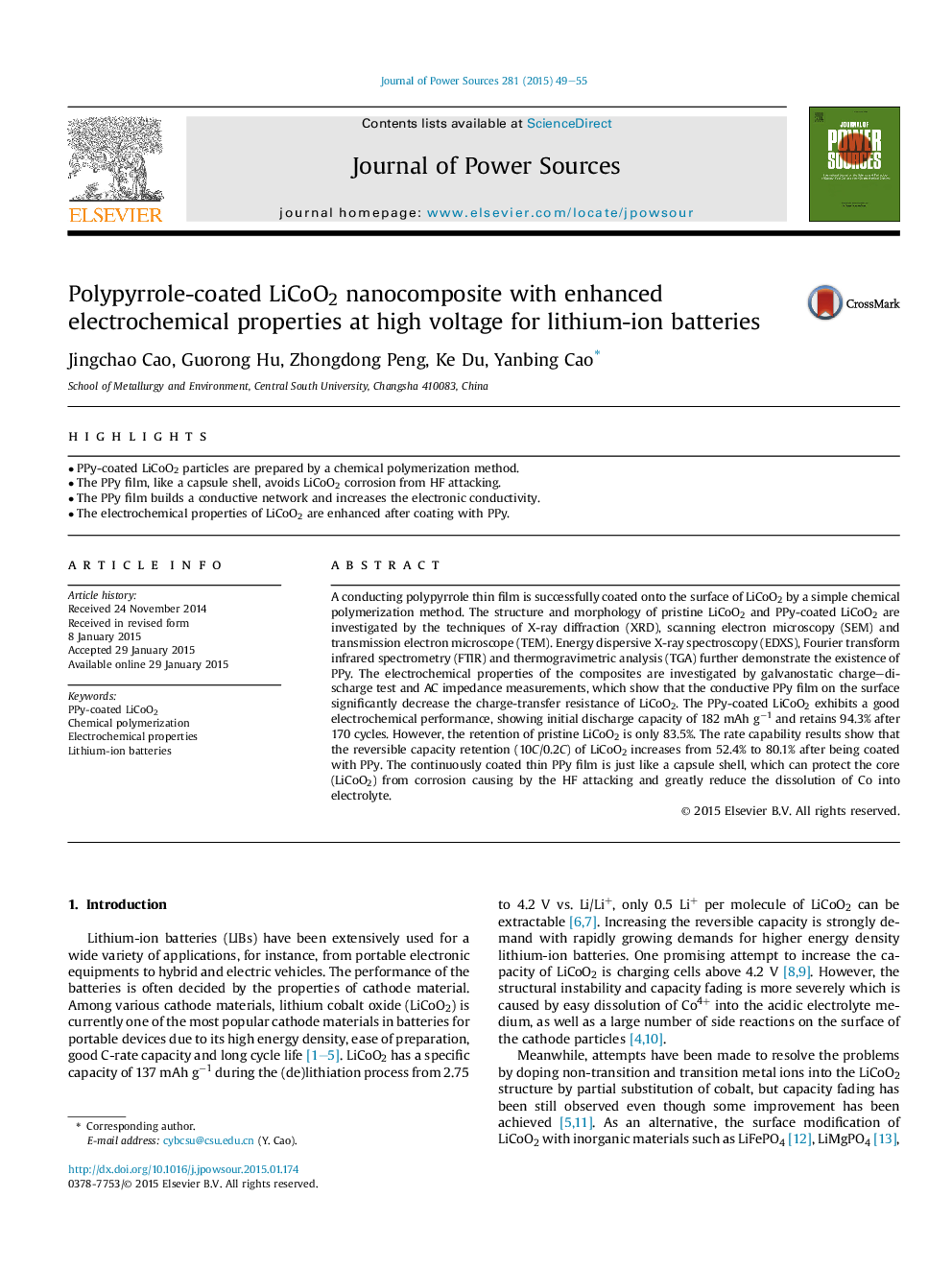| Article ID | Journal | Published Year | Pages | File Type |
|---|---|---|---|---|
| 1286285 | Journal of Power Sources | 2015 | 7 Pages |
•PPy-coated LiCoO2 particles are prepared by a chemical polymerization method.•The PPy film, like a capsule shell, avoids LiCoO2 corrosion from HF attacking.•The PPy film builds a conductive network and increases the electronic conductivity.•The electrochemical properties of LiCoO2 are enhanced after coating with PPy.
A conducting polypyrrole thin film is successfully coated onto the surface of LiCoO2 by a simple chemical polymerization method. The structure and morphology of pristine LiCoO2 and PPy-coated LiCoO2 are investigated by the techniques of X-ray diffraction (XRD), scanning electron microscopy (SEM) and transmission electron microscope (TEM). Energy dispersive X-ray spectroscopy (EDXS), Fourier transform infrared spectrometry (FTIR) and thermogravimetric analysis (TGA) further demonstrate the existence of PPy. The electrochemical properties of the composites are investigated by galvanostatic charge–discharge test and AC impedance measurements, which show that the conductive PPy film on the surface significantly decrease the charge-transfer resistance of LiCoO2. The PPy-coated LiCoO2 exhibits a good electrochemical performance, showing initial discharge capacity of 182 mAh g−1 and retains 94.3% after 170 cycles. However, the retention of pristine LiCoO2 is only 83.5%. The rate capability results show that the reversible capacity retention (10C/0.2C) of LiCoO2 increases from 52.4% to 80.1% after being coated with PPy. The continuously coated thin PPy film is just like a capsule shell, which can protect the core (LiCoO2) from corrosion causing by the HF attacking and greatly reduce the dissolution of Co into electrolyte.
